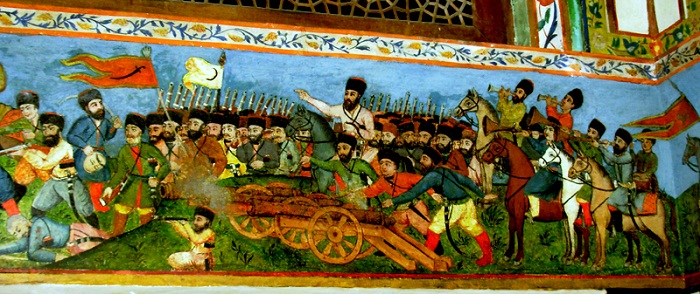The history of the formation of Karabakh miniature arts, which took shape in the form of book illustrations, has not been established accurately. However, the idea that this history began in the early 13th century seems more realistic.

Machine miniatures, which were very rare in Karabakh miniature school until the 16th century, started to develop from the middle of the century and quickly turned into a special genre. Unlike book illustrations, such separate miniatures often described ordinary events such as hunting and fighting scenes, parties and music gatherings, shows in palaces, portraits of shahs and the nobility and rarely, poetic plots from classical literature.
In the middle of the 16th century, Karabakh painters created a series of miniature portraits. Such portraits were quite similar to each other in terms of regularity, images and ethnography.

In the second half and at the end of the 16th century, miniatures depicting real-life events and ordinary household scenes were more common in Karabakh than book illustrations.
Karabakh miniature arts continued until the late 19th century. However, miniature pictures drawn in manuscripts and stone print books in the 18th-19th centuries had a plain, schematic and sometimes primitive "cheap" nature in terms of composition, images and colours.
In the Soviet period, Karabakh miniature arts started making creative use of the rich traditions of classical miniature arts and their artistic and stylistic particularities. The use of the stylistic particularities of Karabakh miniature arts became even more widespread, and the creative efforts of a number of Karabakh painters in the sphere of dyeing, graphics and book illustrations resulted in successful pieces of art.
















































